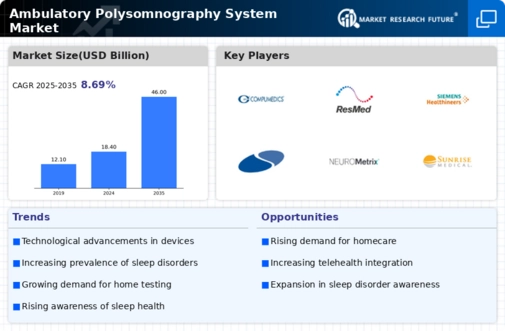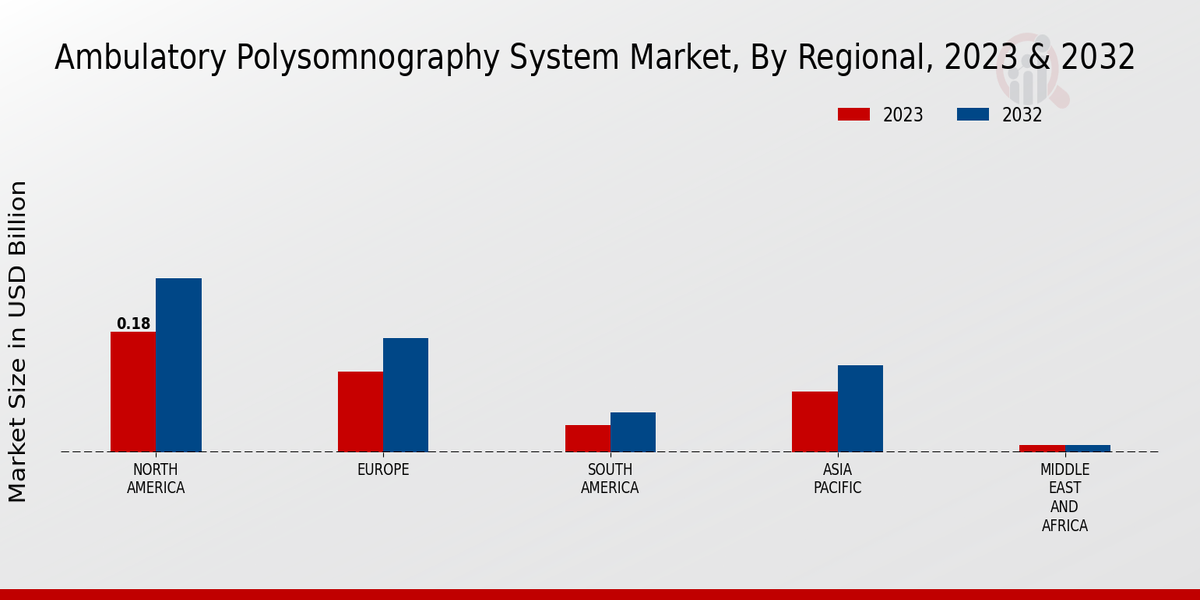Market Growth Chart
Increased Healthcare Expenditure
Rising healthcare expenditure across various regions is a crucial driver for the Global Ambulatory Polysomnography System Market Industry. Governments and private sectors are investing more in healthcare infrastructure, which includes diagnostic tools for sleep disorders. This increased funding allows for the procurement of advanced polysomnography systems, thereby enhancing diagnostic capabilities. As the market is expected to grow to 46.0 USD Billion by 2035, the sustained investment in healthcare is likely to support the adoption of these systems. Enhanced funding also facilitates research and development, leading to more innovative solutions in sleep diagnostics.
Rising Prevalence of Sleep Disorders
The increasing incidence of sleep disorders globally drives the demand for the Global Ambulatory Polysomnography System Market Industry. Conditions such as obstructive sleep apnea and insomnia are becoming more prevalent, affecting millions worldwide. According to health statistics, approximately 30% of adults experience sleep disturbances, which necessitates effective diagnostic tools. The growing awareness of sleep health and its impact on overall well-being further propels the market. As healthcare providers seek efficient solutions for diagnosing sleep disorders, the ambulatory polysomnography systems are positioned to meet this rising demand.
Regulatory Support and Standardization
Regulatory support and standardization play a vital role in shaping the Global Ambulatory Polysomnography System Market Industry. Governments and health organizations are establishing guidelines and standards for sleep disorder diagnosis and treatment. This regulatory framework encourages the adoption of ambulatory polysomnography systems by ensuring their efficacy and safety. Compliance with these standards not only boosts consumer confidence but also promotes market growth. As the industry evolves, regulatory bodies are likely to continue refining these guidelines, which may further enhance the credibility and acceptance of ambulatory sleep monitoring solutions.
Growing Demand for Home Healthcare Solutions
The shift towards home healthcare solutions is a notable trend impacting the Global Ambulatory Polysomnography System Market Industry. Patients increasingly prefer receiving care in the comfort of their homes, particularly for chronic conditions like sleep disorders. This trend is supported by the convenience and cost-effectiveness of home-based monitoring systems. The market is projected to reach 18.4 USD Billion in 2024, reflecting this growing preference. As healthcare systems adapt to this demand, ambulatory polysomnography systems are becoming essential tools for remote patient monitoring, enabling timely interventions and reducing hospital visits.
Technological Advancements in Sleep Monitoring
Innovations in technology significantly enhance the capabilities of ambulatory polysomnography systems, thereby influencing the Global Ambulatory Polysomnography System Market Industry. Advanced features such as wireless connectivity, real-time data transmission, and improved sensor accuracy are becoming standard in these systems. These advancements not only facilitate better patient monitoring but also improve the accuracy of sleep studies. As a result, healthcare providers are increasingly adopting these sophisticated systems. The integration of artificial intelligence and machine learning in sleep analysis is expected to further revolutionize the market, making it more appealing to both clinicians and patients.








